Take a look at these historical images from around Copenhagen to compare wartime Denmark with the same locations today.
READ ALSO:
- How Denmark was liberated at the end of World War Two
- How do young people in Denmark view the Second World War?
A Red Cross ambulance at City Hall Square (Rådhuspladsen), Copenhagen 1945
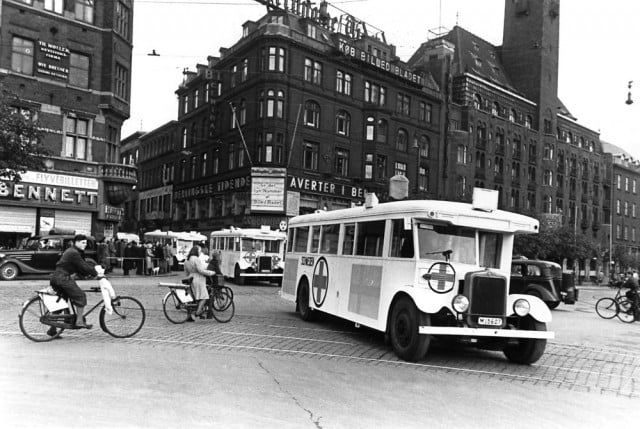
Photo: Ritzau Scanpix
Crossing between two Copenhagen districts, Amager and Christianshavn in 1942.
The crossing is no longer a roundabout and is now known as Christmas Møllers Plads, named after John Christmas Møller, a former leader leader of the Danish Conservative party who was active in the resistance to the Nazi occupation and fled to London in 1942.
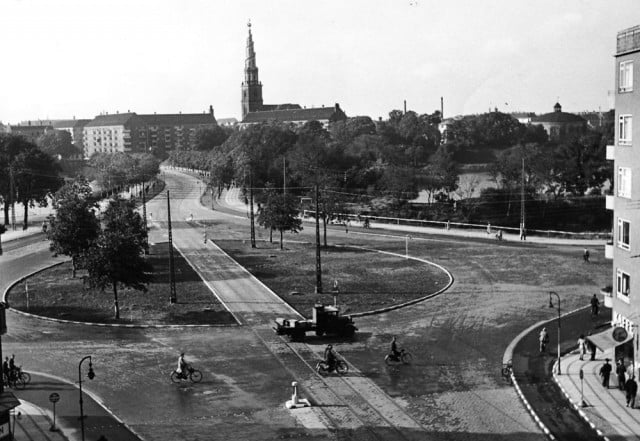
Photo: Ritzau Scanpix
On the first day of the the occupation on April 9th, 1940, cars were parked across Copenhagen's streets so that German forces could control traffic in and out of the capital. This image shows Sølvgade at the heart of the city.
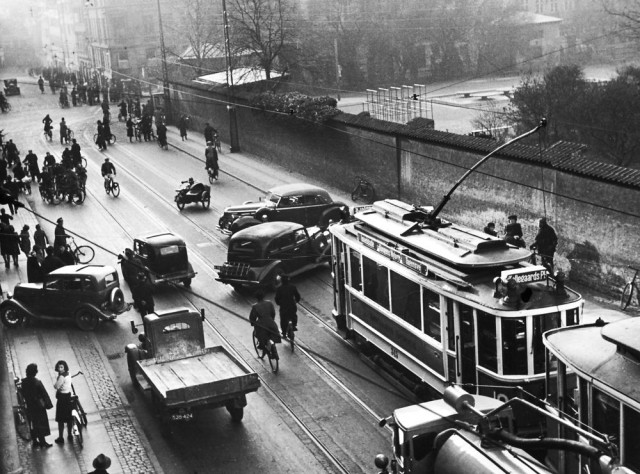
Photo: Ritzau Scanpix
The below image shows German aircraft over royal residence Amalienborg on the same day.
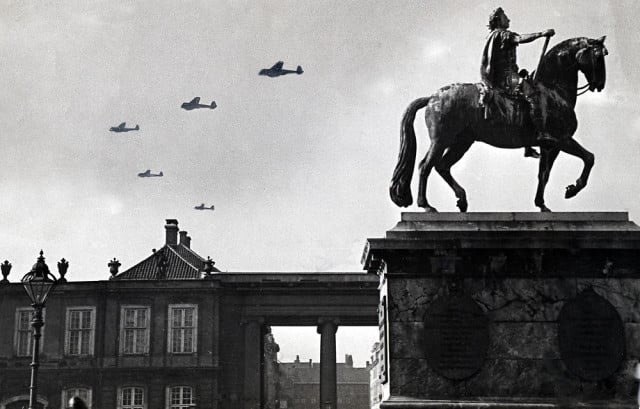
Photo: Ritzau Scanpix
People queue to buy coffee during rationing; the same shop exists at the location today.
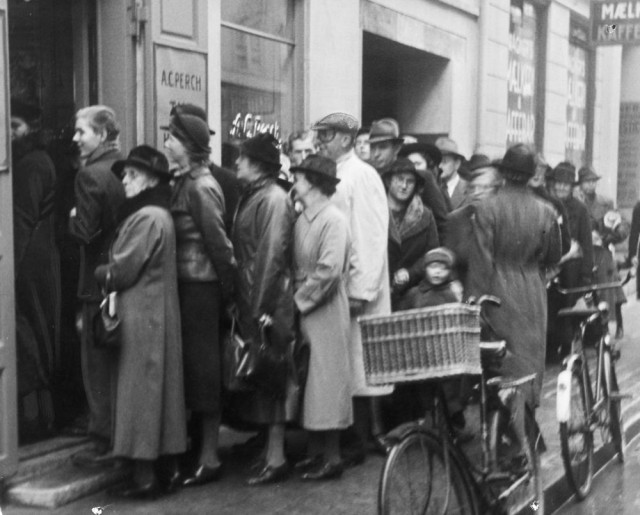
Photo: Ritzau Scanpix
Bunkers being dug at Christianshavn in 1944.
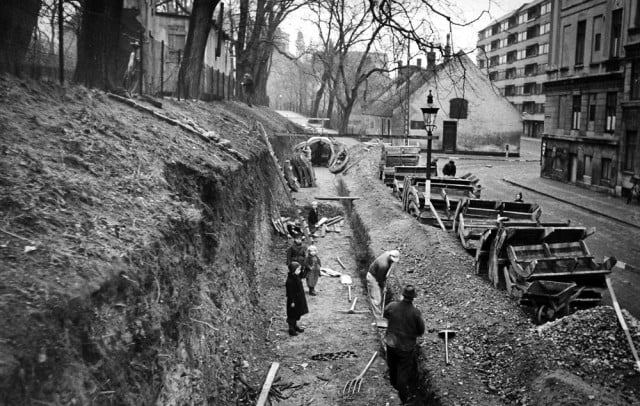
Photo: Ritzau Scanpix
A strike on famous Copenhagen street Istedgade, in the Vesterbro neighbourhood, 1944.
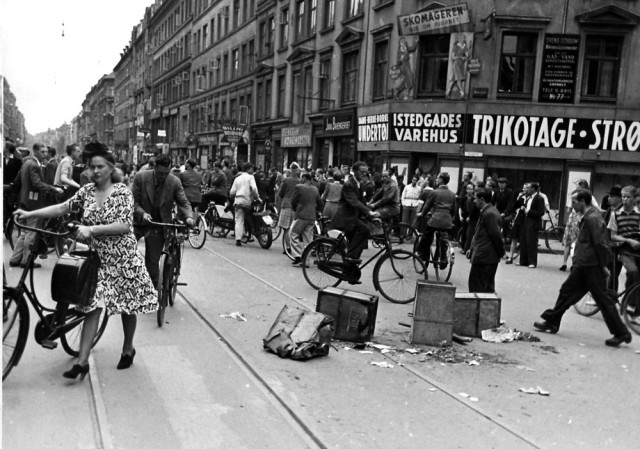
Photo: Ritzau Scanpix
A gas-driven ambulance on Vesterbrogade, Copenhagen 1942. Swastikas can be seen on the facade of the building on the opposite side of the road.
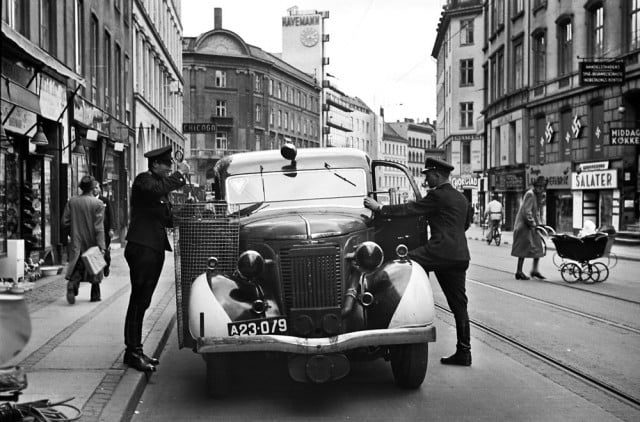
Photo: Sven Gjørling / Ritzau Scanpix
Some things do resemble life in modern-day Copenhagen. Cyclists near Christiansborg, 1940.
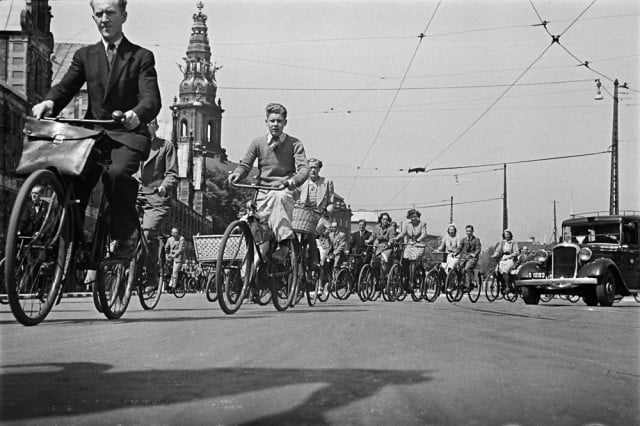
Photo: Ritzau Scanpix
The Langlinie Pavilionen was destroyed in 1944 by the Schalburg Corps a German and Danish collaborator group which carried out revenge actions against the Danish resistance movement. A new building was constructed in its place after the war.
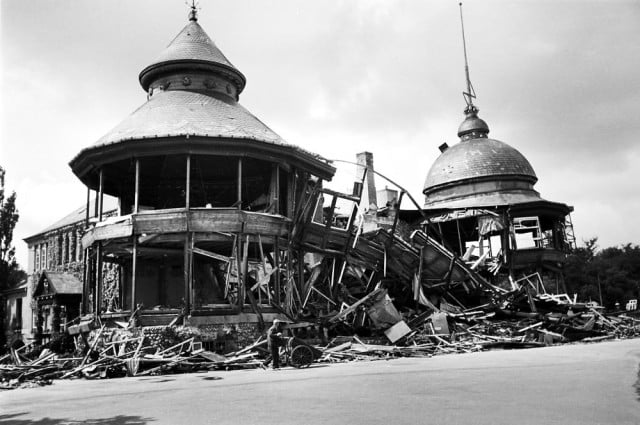
Photo: Vittus Nielsen / Ritzau Scanpix
Denmark was liberated by Allied troops on May 5th, 1945. Here at Gammel Torv, a central square in Copenhagen.
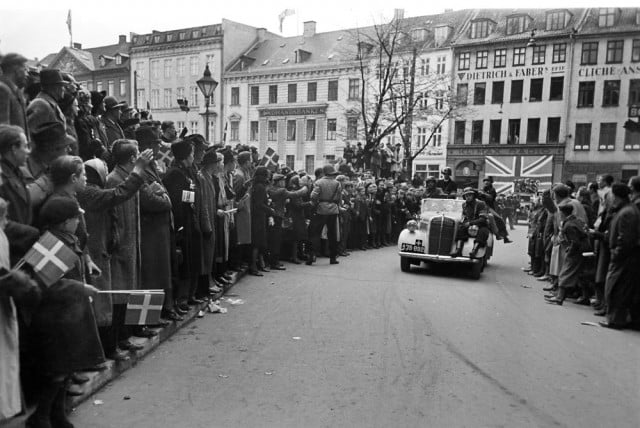
Photo: Sven Gjørling / Ritzau Scanpix
SEE MORE: Denmark in days gone by:


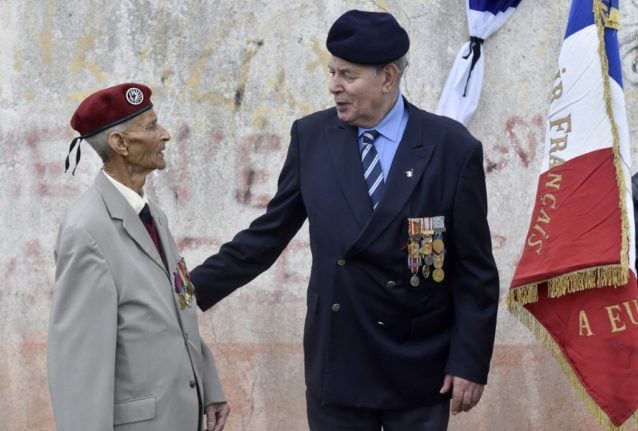
 Please whitelist us to continue reading.
Please whitelist us to continue reading.
Member comments